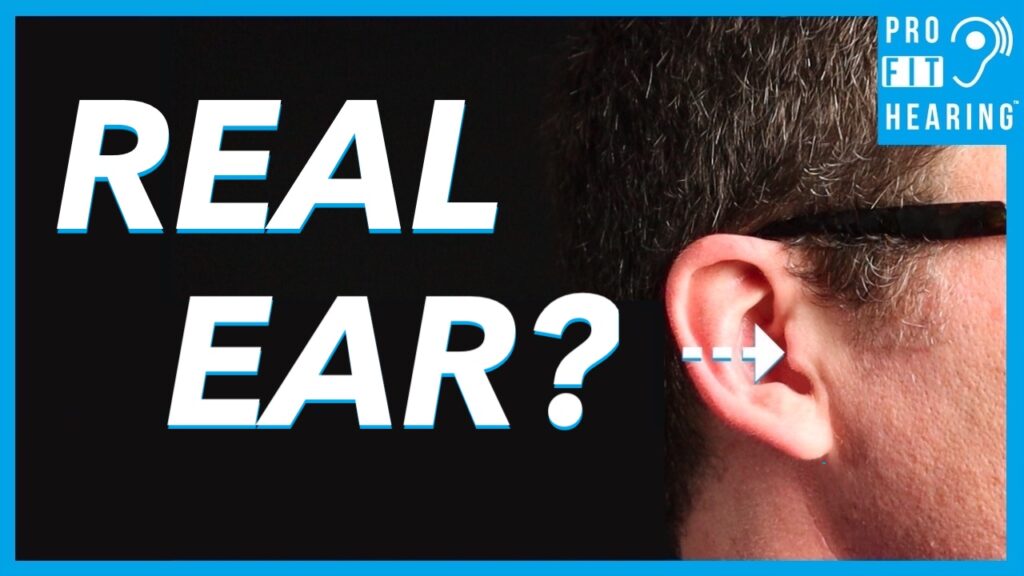Hearing Aid Fitting – What is Real Ear Measurement?

Hearing Aid Fitting
Do you have an upcoming hearing aid fitting? Well, in this post I’m talking about Real Ear Measurement. What is it, and why is it so important? Coming up!
SUBSCRIBE to our YouTube channel for weekly videos!
Hi, I’m Dr. Derek – audiologist, audio engineer, and musician with Pro Fit Hearing.com bringing you the best insight in today’s latest hearing aids, headphones, and audio technology to improve your life. If you have concerns about your hearing, always consult with your local physician or audiologist.
Hearing Aid Fitting & Real Ear?
So, what is real ear measurement and why is it so important?
The outer ear not only gathers sound and directs it into our ear canal, but it also naturally amplifies high pitch sounds that are important for speech clarity and understanding.
When you insert a hearing aid into your ear, this natural sound amplification is lost and it must be replaced by increasing the hearing aid volume. In addition to that, you also need to provide more volume to compensate for the hearing loss.
Hearing aid software determines the appropriate volume settings for a particular hearing loss using a hearing aid fitting formula, however this formula can not completely account for the acoustical differences between people’s ears. That’s why Real Ear measurement is so important. Real ear measurement verifies if a hearing aid is working as prescribed.
Real ear measurement uses a small tube placed inside the ear canal next to the eardrum. This tube is attached to a microphone. During the test, a sound is played and the sound level inside the ear canal is recorded. This is called the Real Ear Unaided Response (REUR). It measures the sound level without a hearing aid.
The hearing aid is then inserted into the ear while also keeping the small tube inside the ear canal. The sound level inside the ear canal is recorded again. This is called the Real Ear Aided Response (REAR). It measures the sound level with the hearing aid in.
Real ear measurement ensures that the person has an accurate hearing aid fitting that is specifically tuned to their ear canal acoustics. Hearing aid volume settings are adjusted so that the volume is not too soft or too loud for the person’s hearing loss. This not only helps you hear your best, but it also improves the overall hearing aid satisfaction.
Real ear measurement should be performed at every hearing aid fitting appointment. It will provide the most optimized settings. Everyone needs some time to acclimate to hearing aids, especially if you’re a new user. You should also have the ability to adjust your overall volume yourself if needed, but you can also ask your provider for additional sound adjustments based on your personal preferences.
Question of the Day
So for today’s question, did you know about Real Ear and did you realize how important it is? Let’s connect in the comments below!
Connect with Pro Fit Hearing on social media. Be a part of the Pro Fit Hearing community!
If you’re interested in hearing aids, click HERE for my free ebook “How to Buy Hearing Aids.” Know what to ask your audiologist or hearing aid dispenser so that your hearing aids are easy to use and have all the features you’re looking for.
Remember Pro Fit Hearing brings you the best insight in today’s latest hearing aids, headphones, and audio technology to improve your life. If you have concerns about your hearing, always consult with your local physician or audiologist.
-Dr. Derek
